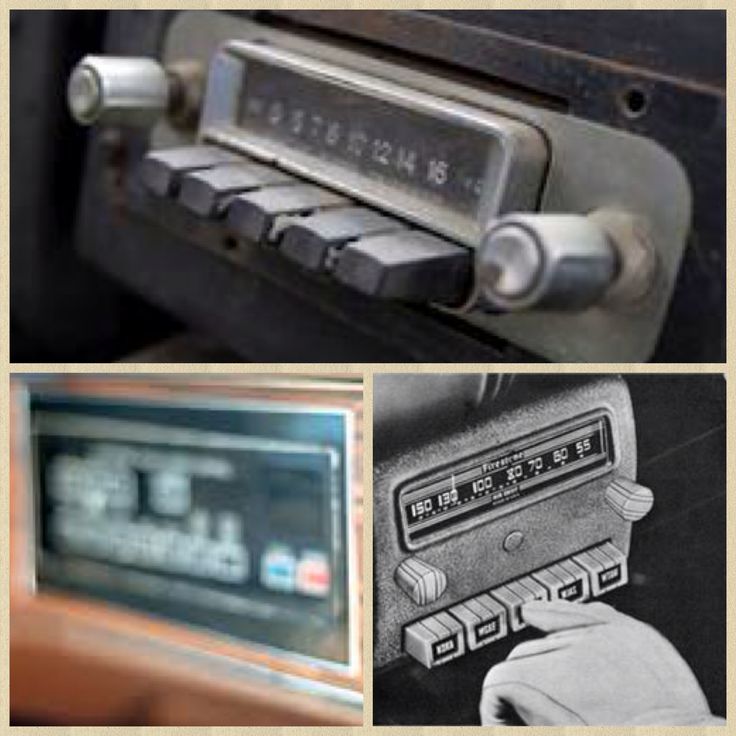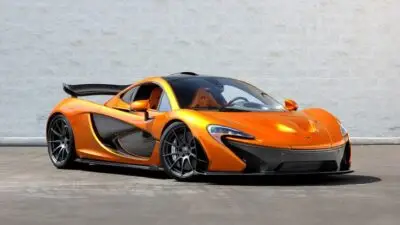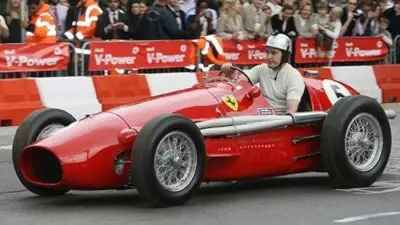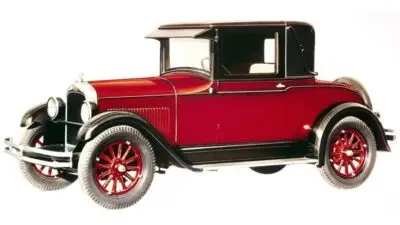Car radios have come a long way since they first appeared in vehicles in the early 1920s. What began as a luxury option in Chevrolet cars has transformed into sophisticated entertainment systems that now include satellite radio, smartphone integration, and advanced sound quality features. The evolution of car audio systems represents one of the most significant changes in automobile features, progressing from simple AM radios with vacuum tubes to today’s digital multimedia centers that serve as the hub for music, navigation, and communication.

The journey of in-car entertainment reflects broader technological advances throughout the decades. Early car radios were bulky, expensive, and often unreliable due to their vacuum tube technology. As car audio systems evolved, they incorporated new media formats from 8-track tapes to cassettes, CDs, and eventually digital streaming. What was once simply for listening to music and radio has now become integrated with car telematics, telecommunications, and hands-free technology.
Key Takeaways
- Car radios evolved from basic AM units in the 1920s to today’s complex digital entertainment systems with multiple functions beyond just audio.
- Technological breakthroughs in car audio have closely followed consumer electronics trends, from vacuum tubes to digital streaming capabilities.
- Modern in-car entertainment systems now integrate with smartphones, navigation, and vehicle diagnostics, fundamentally changing how drivers interact with their vehicles.
Historical Development of Car Radios

Car radios transformed the driving experience from silent journeys to entertaining trips. These devices evolved significantly over decades, changing how we experience music and information while on the road.
The Advent of the First Car Radio
The first commercial car radios appeared in the early 1920s, though they weren’t immediately popular. Chevrolet offered car radios as an optional feature in 1922, but these early models were expensive and complicated.
The Galvin brothers, Paul and Joseph, made a breakthrough in 1930 with their company Galvin Manufacturing Corporation. They created the first commercially successful car radio called the “Motorola,” which cost about $130 – a significant investment at that time.

Early car radios faced technical challenges like interference from the car’s ignition system. They were also bulky, requiring large batteries and components that took up considerable space in vehicles.
From AM to FM: Radio Tuning Evolution
AM (Amplitude Modulation) radio dominated the early decades of car audio. These radios were simple but effective for receiving news and music while driving.
By the 1950s, car radios became more sophisticated with the addition of buttons for preset stations and improved tuning mechanisms. The introduction of transistors replaced vacuum tubes, making radios smaller and more reliable.
FM (Frequency Modulation) radio began appearing in premium car models during the 1960s. FM offered superior sound quality with less static interference compared to AM radio.
Many vehicles featured dual AM/FM receivers by the 1970s. This technology advancement allowed drivers to enjoy clearer music reception and a wider variety of stations while traveling.
The Era of 8-Track and Compact Cassettes
The 1960s brought a revolution to car audio with the introduction of the 8-track tape player. This system allowed drivers to select their own music rather than relying solely on radio broadcasts.
8-track players were popular but had limitations:
- Limited song selection
- Tendency to jam
- Bulky cartridge size
The compact cassette, introduced by Philips in the early 1960s, eventually replaced 8-track tapes in cars. By the mid-1970s, in-dash cassette players became standard in many vehicles.
Cassettes offered several advantages over 8-tracks:
- Smaller size
- Better durability
- Ability to record personal music collections
This era marked the first time drivers could truly customize their driving soundtrack, setting the stage for future developments in personalized car entertainment.
Breakthroughs in Car Audio Technology

The automotive audio landscape transformed dramatically with the introduction of digital technology. These innovations changed not only how we listen to music in cars but also revolutionized the entire driving experience.
Introduction of Compact Disc Players
The arrival of in-dash CD players in the 1980s marked a significant leap from cassette tapes. Pioneer introduced one of the first car CD players in 1984, delivering superior sound quality without the degradation issues of magnetic tape.
Early CD players faced challenges with skipping due to vehicle vibration. Manufacturers developed anti-skip technology with buffer memory to solve this problem, allowing for continuous playback even on bumpy roads.
By the mid-1990s, multi-disc changers became popular additions to car audio systems. These devices could hold 6-12 CDs at once, eliminating the need for drivers to change discs frequently during travel.
CD technology also enabled the development of more sophisticated car audio systems with digital signal processing and multi-channel output capabilities.
The Rise of MP3 Players and Digital Media
The early 2000s witnessed another revolution with MP3 technology. Vehicles began incorporating auxiliary inputs that allowed connection to portable MP3 players, significantly expanding music storage capacity.
The iPod’s release in 2001 influenced car audio design, with many manufacturers creating iPod-specific interfaces. This evolution made it possible to store thousands of songs in a device smaller than a single CD.
Advanced connectivity features like USB ports became standard in vehicles around 2005. These ports allowed direct connection of flash drives and digital music players, eliminating the need for external adapters.
Bluetooth technology further transformed car audio around 2010, enabling wireless streaming from smartphones to car stereos. This development freed drivers from physical connections while expanding access to music services and digital content.
The shift to digital media also supported higher quality audio formats, giving rise to audiophile-grade in-car entertainment systems with improved amplifiers, sophisticated equalizers, and premium speaker configurations.
Modern In-Car Entertainment Systems

Today’s vehicles feature sophisticated entertainment systems that combine connectivity, smart device integration, and premium audio experiences. These systems have transformed how drivers and passengers interact with their vehicles during travel.
Infotainment and Connectivity Features
Modern infotainment systems have evolved dramatically from simple radios to comprehensive digital hubs. These systems now feature touchscreen displays ranging from 7 to 15+ inches, depending on the vehicle model and price point.
Most new vehicles come equipped with built-in navigation systems that provide real-time traffic updates, points of interest, and turn-by-turn directions. Many also include multiple USB ports for charging and data transfer.
Internet connectivity has become standard in premium vehicles, allowing for over-the-air updates and access to streaming services like Spotify, Pandora, and SiriusXM. Some systems even offer Wi-Fi hotspot capabilities, turning the vehicle into a mobile connectivity hub.
Voice control technology has also improved significantly, enabling drivers to adjust settings, make calls, or change music without taking their hands off the wheel.
Integration with Smart Devices
Smartphone integration has revolutionized in-car entertainment through platforms like Apple CarPlay and Android Auto. These interfaces mirror familiar phone interfaces onto the vehicle’s display screen, providing access to apps, messages, and calls.
Bluetooth connectivity allows for wireless music streaming and hands-free calling. The latest Bluetooth standards improve connection reliability and audio quality compared to earlier versions.
Many new vehicles support wireless CarPlay and Android Auto, eliminating the need for cables. Some manufacturers have developed proprietary apps that allow remote starting, climate control adjustment, and vehicle location services.
Smart assistants like Siri, Google Assistant, and Amazon Alexa have been integrated into many vehicles, allowing voice commands for both vehicle functions and connected home devices. This creates a seamless transition between home and car technology ecosystems.
Advancements in Sound Quality and Systems
Modern vehicles offer sophisticated audio systems that rival home setups. Premium brands partner with audio specialists like Bose, Harman Kardon, Bang & Olufsen, and Mark Levinson to create custom-tuned systems.
These systems typically feature multiple speakers—sometimes 10 to 20 or more—strategically placed throughout the cabin. Advanced surround sound technology creates immersive listening experiences previously impossible in automotive environments.
Digital signal processing (DSP) compensates for cabin acoustics, adjusting sound based on vehicle speed and ambient noise. Some systems include noise-cancellation technology to reduce road and engine noise.
High-resolution audio support has become more common, allowing audiophiles to enjoy lossless music files. Many systems now include customizable equalizers with presets for different music genres.
Rear seat entertainment has also evolved, with some luxury vehicles offering dedicated screens, wireless headphones, and independent audio zones for passengers.
Current Trends and User Experience

Today’s car audio systems have evolved far beyond simple radios into complex digital entertainment hubs. Modern vehicles integrate advanced connectivity features that enhance both driver safety and passenger enjoyment.
Convenience of Music Streaming Services
The days of CD changers and MP3 players have largely given way to streaming services that offer virtually unlimited music libraries. Drivers can now access platforms like Spotify, Apple Music, and Pandora directly through their vehicle’s infotainment system.
Most new vehicles support both Android Auto and Apple CarPlay, allowing seamless integration with smartphone music apps. This connectivity eliminates the need for physical media entirely.
Podcasts have also gained significant popularity in the car audio space. Many infotainment systems now feature dedicated podcast apps or easy access to podcast platforms.
Personalized playlists and recommendations have become standard features, with systems learning driver preferences over time. Some premium vehicles even offer spatial audio and advanced sound processing to create concert-like listening experiences.
Car Audio and Hands-Free Legislation
Safety regulations have significantly shaped modern in-car entertainment systems. Most regions now require hands-free operation for calls and messaging while driving.
Key features mandated by legislation include:
- Automatic phone pairing via Bluetooth
- Voice-activated dialing and text messaging
- Emergency call capabilities
- Driver distraction minimization features
Manufacturers have responded by creating systems that balance entertainment options with driver safety. Touch screens now often include haptic feedback and larger buttons to minimize visual distraction.
Many newer vehicles include driver monitoring systems that can detect inattention and limit infotainment functions accordingly. These systems help ensure that entertainment options don’t compromise road safety.
Voice Control and Telematics
Voice recognition technology has transformed how drivers interact with their vehicles. Modern systems understand natural language commands rather than requiring specific phrases.
Popular voice assistants like Google Assistant, Amazon Alexa, and Siri have been integrated into car infotainment systems, allowing drivers to control various functions without taking their hands off the wheel. These include:
- Navigation instructions
- Music selection and playback
- Climate control adjustment
- Phone calls and messaging
Telematics services like OnStar provide additional safety and convenience features. These systems offer automatic crash response, roadside assistance, and remote vehicle diagnostics.
Advanced telematics also enable remote vehicle control via smartphone apps. Drivers can start their car, lock doors, or check fuel levels from anywhere with cellular service.
Installation, Brands, and Market Evolution

The world of car audio evolved through changing installation practices, brand competition, and commercial strategies that transformed how we experience music on the road.
DIY and Professional Installation of Car Audio
In the early days of car radios, installation was complex and expensive. The first car radios required significant modifications to the vehicle’s dashboard and electrical system. Motorola’s early models in the 1930s cost around $130 (equivalent to about $2,500 today) plus installation fees.
By the 1950s and 1960s, car radios became standard features in many vehicles, simplifying the installation process. The aftermarket scene exploded in the 1970s and 1980s when consumers sought to upgrade factory systems.
DIY culture flourished in the 1990s with enthusiasts installing their own amplifiers, speakers, and subwoofers. Publications and later online forums provided step-by-step guides for hobbyists.
Today, modern car audio systems often integrate with complex vehicle electronics, pushing many consumers toward professional installation services for advanced features like smartphone integration and digital signal processing.
Brand Influence on Consumer Choices
Pioneer, Alpine, Kenwood, and Blaupunkt dominated the aftermarket car audio landscape for decades. These brands built reputations for quality and innovation that swayed consumer preferences.
Bose revolutionized factory audio by partnering with car manufacturers to create custom-engineered sound systems. Their first partnership with Cadillac in 1983 changed how premium audio was marketed in vehicles.
The 1990s saw JBL, Infinity, and Harman Kardon gain significant market share through partnerships with automakers. These brands emphasized acoustic engineering specifically tailored to vehicle interiors.
Brand loyalty in car audio remains strong, with enthusiasts debating the merits of different manufacturers. Modern consumers now also consider compatibility with streaming services and smartphone integration when selecting brands.
Commercial Success of In-Car Entertainment
The car audio industry experienced explosive growth in the 1980s and 1990s. CD players commanded premium prices when introduced, with some high-end models selling for over $1,000.
The boomin’ systems era of the 1980s-1990s saw car audio become a major status symbol, driving billions in sales of powerful amplifiers and subwoofers. Car audio competitions became popular events where enthusiasts showcased extreme installations.
Satellite radio created a new subscription model, with SiriusXM reaching over 30 million subscribers by 2020. This recurring revenue stream transformed part of the industry from hardware-focused to service-oriented.
Today’s integrated infotainment systems combine entertainment, navigation, and vehicle controls. The market has shifted toward software experiences, with Apple CarPlay and Android Auto becoming major selling features for both aftermarket units and factory systems.
The Cultural Impact of In-Car Audio

Car audio systems have profoundly shaped American culture, transforming how people experience music and influencing social identities across generations.
Music on the Road: A Mobile Lifestyle
The introduction of in-car entertainment created a new relationship between Americans and their music. For many, the daily commute became a personal concert experience rather than lost time.
Car radios helped establish the concept of “driving music” – songs that paired perfectly with highway cruising or city navigation. This phenomenon influenced how record labels promoted certain tracks that sounded best on car speakers.
Sound systems symbolized upward mobility and cultural identity, especially in youth culture. In the 1980s and 90s, elaborate car audio setups with powerful subwoofers became status symbols in many communities.
Portable car audio technologies like the “Highway Hi-Fi” record player of the 1950s and later innovations allowed drivers to bring personal music collections on the road, creating customized soundtracks for life’s journeys.
Car Radios in Media and Popular Culture
Car radios and in-car audio have been featured prominently in films, music, and literature. Countless movie scenes use characters changing radio stations to establish setting or mood.
Songs like The Clash’s “Brand New Cadillac” and Bruce Springsteen’s “Radio Nowhere” directly reference the emotional connection between drivers and their car radios. These references highlight how deeply this technology penetrated American consciousness.
Television commercials frequently use in-car entertainment features to market vehicles, emphasizing how audio technology enhances the driving experience. Advanced sound systems often feature as premium selling points.
Car audio culture spawned dedicated magazines, clubs, and competitions. “Sound-offs” where enthusiasts compete for the loudest or most precise audio systems became popular events that transcended mere entertainment and served as platforms for technical innovation.
Frequently Asked Questions

Car audio systems have undergone dramatic changes since their introduction nearly a century ago. These innovations have transformed our driving experience and shaped how we consume media on the go.
What were the features of the earliest car radios and how have they evolved?
The earliest car radios from the 1930s were bulky, expensive units with limited AM reception capabilities. These primitive systems required separate power supplies and featured basic volume and tuning controls.
Early radios lacked preset stations and often suffered from poor reception quality. They were also quite expensive, often costing the equivalent of thousands in today’s dollars.
Modern car audio systems now include digital tuners, multiple speakers, customizable equalizers, and integration with various media sources. Today’s systems prioritize user experience with intuitive controls and voice command capabilities.
When did car radios become a standard feature in vehicles?
Car radios began appearing as factory-installed options in the mid-1930s, but didn’t become widespread until after World War II. By the 1950s, AM radios were common in many mid-range vehicles.
FM radio integration came later, becoming more prevalent in the 1970s. One user recalls that “FM radio in the car was a novelty” when they purchased their 1971 LeSabre.
By the 1980s, car radios had become standard equipment in most new vehicles across price ranges, transforming from luxury items to expected features.
How has the integration of multimedia systems changed in-car entertainment?
The transition from simple radios to multimedia systems began with the introduction of 8-track and cassette players in the 1970s. CD players followed in the 1980s, offering improved audio quality.
The early 2000s saw a significant shift with the integration of GPS navigation systems, which required larger screens and more complex interfaces. These screens paved the way for comprehensive infotainment systems.
Today’s vehicles feature touchscreen interfaces that control navigation, climate, vehicle settings, and entertainment from a single hub. Many systems now support smartphone mirroring technologies like Apple CarPlay and Android Auto.
What impact did the introduction of car radios have on music and culture?
Car radios revolutionized music consumption by creating a new context for listening outside the home. This mobility influenced music production, with artists considering how their music would sound in a vehicle.
Radio stations developed specific formats targeting commuters, including traffic updates, shorter segments, and drive-time shows. These formats shaped listening habits and expanded radio’s influence.
The car became a personal listening space, allowing drivers and passengers to create their own soundtrack. This private listening experience strengthened music’s role in personal identity and daily life.
How has the connectivity in car entertainment systems improved over time?
Early car entertainment systems were entirely self-contained with no external connectivity. The first major breakthrough came with auxiliary inputs in the 1990s, allowing connection to portable music players.
Bluetooth technology marked a significant advancement in the 2000s, enabling wireless streaming and hands-free calling. This eliminated the need for physical connections between devices.
Modern vehicles now feature Wi-Fi hotspots, cloud connectivity, and integration with smart home systems. Some systems can receive over-the-air updates, ensuring entertainment features remain current throughout a vehicle’s lifespan.
What were the significant milestones in the evolution of vehicle audio systems?
The introduction of FM stereo in the 1960s represented a major leap in audio quality. This was followed by the addition of cassette players, which allowed drivers to personalize their listening experience for the first time.
Multi-speaker systems and graphic equalizers became popular in the 1980s, dramatically improving sound customization. The compact disc revolutionized in-car audio quality in the late 1980s and 1990s.
Digital media integration in the 2000s eliminated the need for physical media. The most recent infotainment systems now combine entertainment, vehicle information, climate controls, and connectivity features into unified systems that define the modern driving experience.



